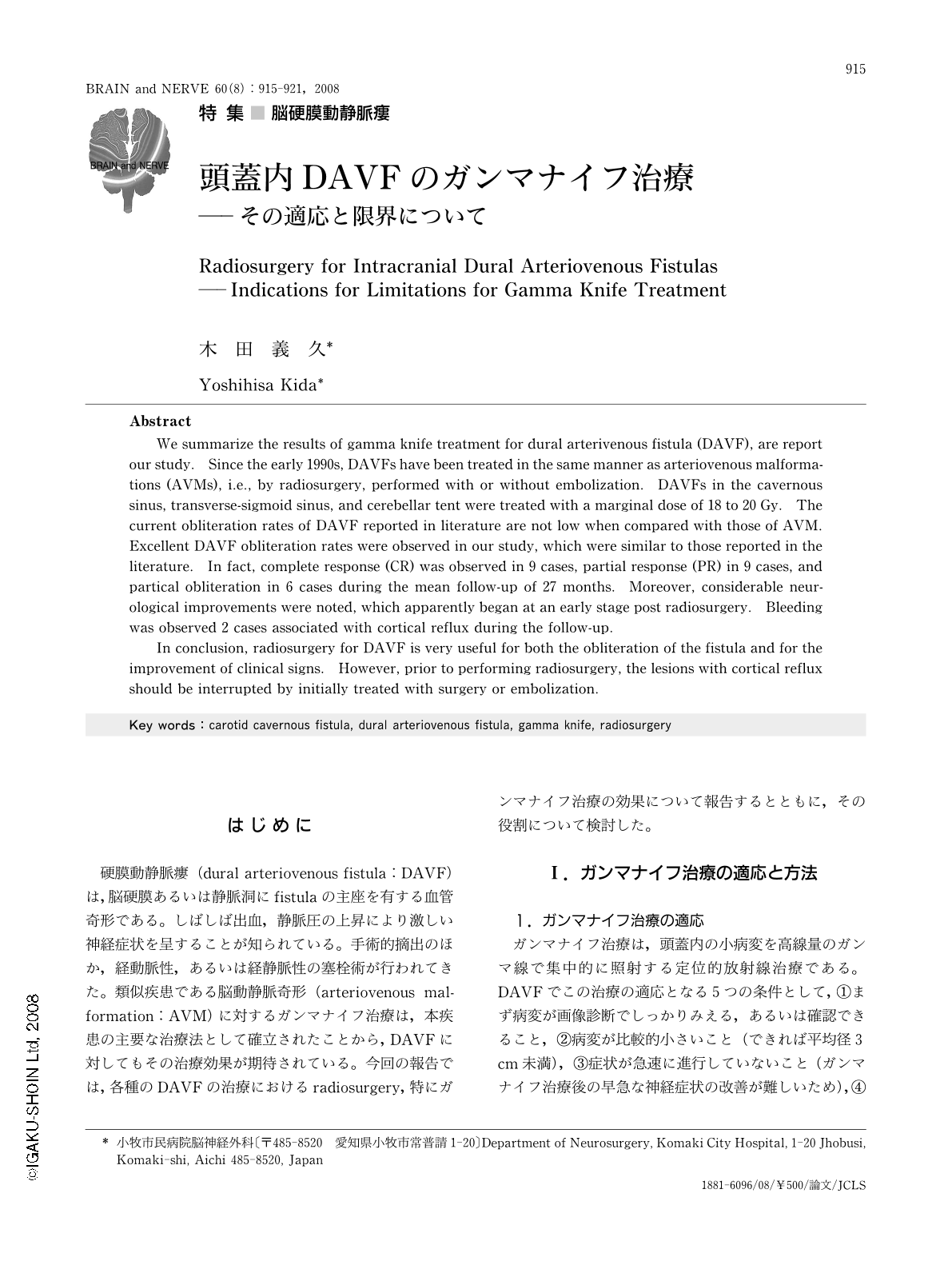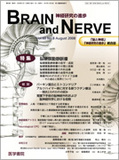Japanese
English
- 有料閲覧
- Abstract 文献概要
- 1ページ目 Look Inside
- 参考文献 Reference
はじめに
硬膜動静脈瘻(dural arteriovenous fistula:DAVF)は,脳硬膜あるいは静脈洞にfistulaの主座を有する血管奇形である。しばしば出血,静脈圧の上昇により激しい神経症状を呈することが知られている。手術的摘出のほか,経動脈性,あるいは経静脈性の塞栓術が行われてきた。類似疾患である脳動静脈奇形(arteriovenous malformation:AVM)に対するガンマナイフ治療は,本疾患の主要な治療法として確立されたことから,DAVFに対してもその治療効果が期待されている。今回の報告では,各種のDAVFの治療におけるradiosurgery,特にガンマナイフ治療の効果について報告するとともに,その役割について検討した。
Abstract
We summarize the results of gamma knife treatment for dural arterivenous fistula (DAVF), are report our study. Since the early 1990s, DAVFs have been treated in the same manner as arteriovenous malformations (AVMs), i.e., by radiosurgery, performed with or without embolization. DAVFs in the cavernous sinus, transverse-sigmoid sinus, and cerebellar tent were treated with a marginal dose of 18 to 20 Gy. The current obliteration rates of DAVF reported in literature are not low when compared with those of AVM. Excellent DAVF obliteration rates were observed in our study, which were similar to those reported in the literature. In fact, complete response (CR) was observed in 9 cases, partial response (PR) in 9 cases, and partical obliteration in 6 cases during the mean follow-up of 27 months. Moreover, considerable neurological improvements were noted, which apparently began at an early stage post radiosurgery. Bleeding was observed 2 cases associated with cortical reflux during the follow-up.
In conclusion, radiosurgery for DAVF is very useful for both the obliteration of the fistula and for the improvement of clinical signs. However, prior to performing radiosurgery, the lesions with cortical reflux should be interrupted by initially treated with surgery or embolization.

Copyright © 2008, Igaku-Shoin Ltd. All rights reserved.


